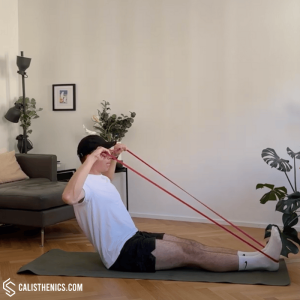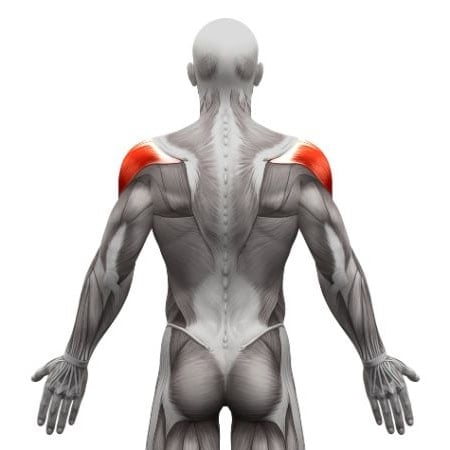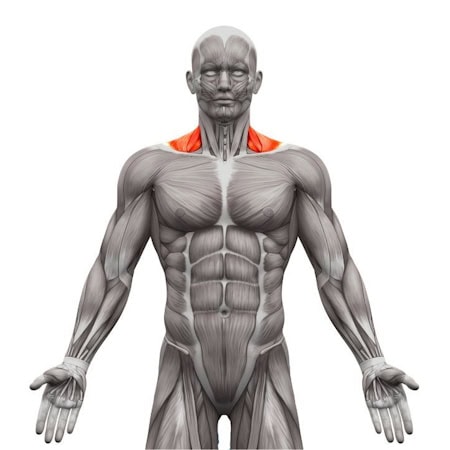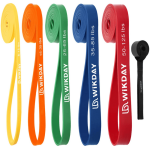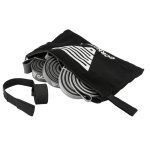Resistance Band Face Pulls
How to do Resistance Band Face Pulls?
Resistance band face pulls are an upper-body exercise that targets the muscles of the upper back and shoulders, specifically the rear deltoids, rhomboids, and trapezius. This exercise helps improve posture, shoulder stability, and scapular control. By using a resistance band anchored at the feet, the athlete can perform a face pull motion, pulling the band toward the face to engage the upper back and shoulder muscles. Face pulls are an effective way to strengthen the shoulders and improve shoulder joint health, especially when performed with a focus on control.
Steps to Perform a Proper Resistance Band Face Pull:
1. Anchor the Resistance Band Around Your Feet:
• Sit on the floor with your legs extended in front of you, keeping a slight bend in the knees for comfort.
• Loop the middle of the resistance band around the arches of both feet, ensuring it is securely anchored.
2. Grip the Band with Both Hands:
• Hold the ends of the band with a neutral grip (palms facing each other) or an overhand grip (palms facing down), depending on preference.
• Extend your arms in front of you, keeping the band under slight tension, and sit up tall with your chest lifted and core engaged.
3. Engage Your Core and Set Your Posture:
• Keep your spine neutral, shoulders relaxed, and avoid leaning forward or backward.
• Position your hands so they’re roughly shoulder-width apart, with your elbows slightly bent.
4. Pull the Band Toward Your Face:
• Exhale as you pull the band toward your face, leading with your elbows and keeping them high and wide (at about shoulder height).
• Focus on pulling with the muscles in your upper back and shoulders, rather than your arms.
• Squeeze your shoulder blades together and externally rotate your shoulders so that your hands are in line with your ears at the peak of the pull.
5. Hold the Contraction:
• At the end of the movement, hold the contracted position for 1-2 seconds, ensuring full engagement of the upper back and shoulder muscles.
6. Release Back to Starting Position:
• Inhale as you slowly extend your arms back to the starting position, keeping tension on the band throughout.
• Maintain control of the band to prevent it from snapping back, ensuring constant engagement of the muscles.
7. Repeat the Movement:
• Perform the desired number of repetitions, focusing on controlled and deliberate movement to maximize muscle engagement.
Benefits of Resistance Band Face Pulls
• Improves Shoulder Stability and Health: This exercise strengthens the rotator cuff and stabilizing muscles, supporting shoulder health and reducing injury risk.
• Enhances Posture: Strengthening the upper back and rear deltoids helps correct rounded shoulders, promoting better posture.
• Builds Upper Back and Shoulder Strength: Face pulls effectively target the upper back and shoulders, helping to build functional strength and endurance.
• Joint-Friendly: The band provides smooth, controlled resistance, reducing strain on the joints and making it accessible for those with shoulder sensitivities.
• Portable and Convenient: With only a resistance band required, this exercise is ideal for home workouts or while traveling.
• Corrects Muscle Imbalances: Working on scapular retraction and shoulder stability helps balance upper body strength, supporting overall shoulder health.
• Increases Mind-Muscle Connection: Focusing on scapular control and external rotation improves awareness of shoulder movement, enhancing the effectiveness of upper back exercises.
Common Mistakes to Avoid
• Pulling with the Arms: Avoid pulling with your arms or relying on elbow flexion; instead, focus on leading with the elbows and engaging the upper back and shoulders.
• Shrugging the Shoulders: Keep your shoulders down and away from your ears to avoid overusing the upper traps, which can lead to neck tension.
• Using Momentum: Perform the exercise slowly, focusing on controlled movements to engage the target muscles rather than relying on momentum.
• Over-Gripping the Band: Keep a relaxed grip on the band to avoid straining the forearms and focus on activating the upper back.
• Allowing the Band to Snap Back: Control the release back to the starting position, maintaining tension on the muscles to maximize effectiveness and prevent injury.
Tips for the proper execution of Resistance Band Face Pulls
Keep the Elbows High: Lead with your elbows, keeping them in line with your shoulders as you pull to maximize engagement of the rear deltoids.
Engage the Core: Keep your core tight to stabilize your torso and maintain an upright posture, avoiding any rocking or leaning.
Focus on Shoulder Rotation: Rotate your shoulders externally as you pull, ensuring your hands are level with your ears at the peak of the movement.
Avoid Shrugging the Shoulders: Keep your shoulders down and away from your ears to avoid upper trap overactivation.
Controlled Movement: Perform the exercise slowly and with control to fully activate the target muscles and avoid using momentum.
Muscles worked when doing Resistance Band Face Pulls
Primary Muscles:
•Rear Deltoids: The back portion of the shoulder is heavily engaged to pull the band and maintain arm alignment.
•Rhomboids: Located between the shoulder blades, the rhomboids retract the scapula, helping to pull the shoulders back.
•Middle and Lower Trapezius: These muscles assist in stabilizing the shoulder blades and help with scapular retraction.
Secondary Muscles:
•Rotator Cuff Muscles: The infraspinatus and teres minor assist in external shoulder rotation, stabilizing the shoulder joint.
•Forearms and Grip: Help maintain a firm grip on the band throughout the exercise.
•Core: Engages to stabilize the torso, keeping the spine neutral and preventing any rocking.
•Upper Back: The upper back muscles, including parts of the trapezius and rhomboids, help stabilize and retract the scapula.
Primary Muscle(s):
Secondary Muscle(s):
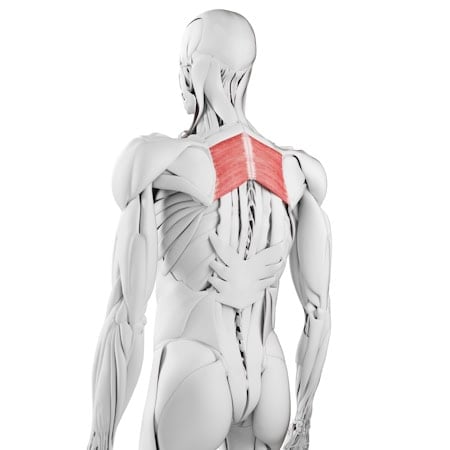
Rhomboid
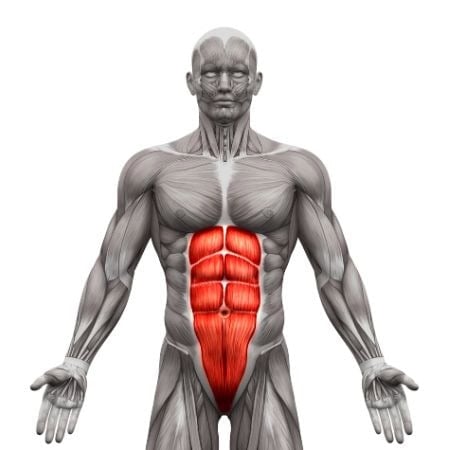
Abdominal
Adjust the difficulty of Resistance Band Face Pulls
How to make Resistance Band Face Pulls harder?
How to make Resistance Band Face Pulls easier?
How to make Resistance Band Face Pulls harder?
To make Resistance Band Face Pulls harder:
-
Use a Heavier Resistance Band: Increase the difficulty by using a band with more resistance, requiring greater upper back and shoulder engagement.
-
Add a Hold at the End of the Pull: Pause for 2-3 seconds at the peak of the movement to increase time under tension, maximizing muscle engagement.
-
Slow Down the Eccentric Phase: Take extra time releasing the band back to the starting position, focusing on controlling the movement during the eccentric (lengthening) phase.
How to make Resistance Band Face Pulls easier?
To make Resistance Band Face Pulls easier:
-
Use a Lighter Resistance Band: Start with a band that provides less resistance, making it easier to perform the movement with proper form.
-
Limit Range of Motion: Perform a smaller pull, focusing on scapular retraction without fully pulling the band to your face, allowing you to build strength gradually.

